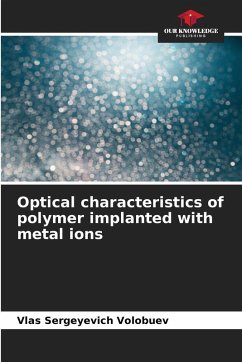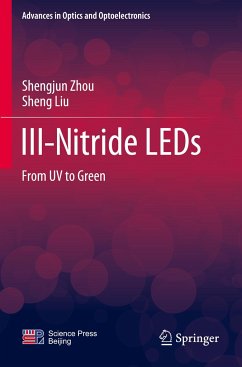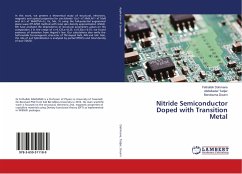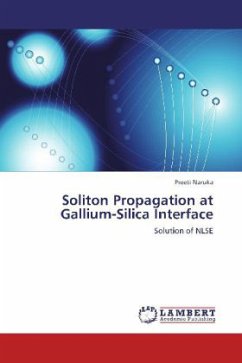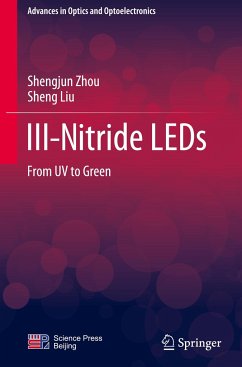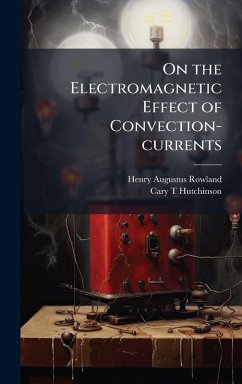
Luminescence Studies of Ion-Implanted Gallium Nitride and Alluminum Gallium Nitride
Versandkostenfrei!
Versandfertig in über 4 Wochen
28,99 €
inkl. MwSt.
Weitere Ausgaben:

PAYBACK Punkte
14 °P sammeln!
Recently, research on the wide bandgap semiconductors such as GaN and AlxGa1-xN became very popular for their applications on various devices. Therefore comprehensive and systematic luminescence studies of Si implanted AlxGa1-xN, Mg doped GaN, and Si+N implanted GaN grown on sapphire substrates by molecular beam epitaxial method have been made as a function of ion dose and anneal temperature. The ions were implanted at 200 keV with doses ranging from 1x10 13 to 1x10 15 cm -2 at room temperature. The samples were proximity cap annealed from 1200 to 1350 [degrees] C with a 500 Ã... thick AlN ca...
Recently, research on the wide bandgap semiconductors such as GaN and AlxGa1-xN became very popular for their applications on various devices. Therefore comprehensive and systematic luminescence studies of Si implanted AlxGa1-xN, Mg doped GaN, and Si+N implanted GaN grown on sapphire substrates by molecular beam epitaxial method have been made as a function of ion dose and anneal temperature. The ions were implanted at 200 keV with doses ranging from 1x10 13 to 1x10 15 cm -2 at room temperature. The samples were proximity cap annealed from 1200 to 1350 [degrees] C with a 500 Ã... thick AlN cap in a nitrogen environment. It has been found that the optical activation and implantation damage recovery are highly dependent upon ion dose and anneal temperature. The results of luminescence measurements on AlxGa1-xN made at 5 K by both photoluminescence and cathodoluminescence show that nearly complete implantation damage recovery can only be obtained after annealing at 1350 [degrees] C. The Si+N implanted GaN showed only a small amount of optical activation in the cathodoluminescence measurements at 1250 to 1350 [degrees] C. Mg doped GaN results indicated that optical activation of the Mg ions was not prevalent, and ion implantation damage might not have been removed completely at 1350 [degrees] C. The results also indicate that current AlN cap protected the implanted AlxGa1-xN layer very well during high temperature annealing without creating any significant annealing damage. These luminescence observations are consistent with the results of electrical activation studies made on these samples. This work has been selected by scholars as being culturally important, and is part of the knowledge base of civilization as we know it. This work was reproduced from the original artifact, and remains as true to the original work as possible. Therefore, you will see the original copyright references, library stamps (as most of these works have been housed in our most important libraries around the world), and other notations in the work. This work is in the public domain in the United States of America, and possibly other nations. Within the United States, you may freely copy and distribute this work, as no entity (individual or corporate) has a copyright on the body of the work. As a reproduction of a historical artifact, this work may contain missing or blurred pages, poor pictures, errant marks, etc. Scholars believe, and we concur, that this work is important enough to be preserved, reproduced, and made generally available to the public. We appreciate your support of the preservation process, and thank you for being an important part of keeping this knowledge alive and relevant.



